First things first, let me address the elephant in the room, yours truly, Dian and me, are not exactly known for our love of scaling mountains in hiking boots. And it was only the night before the trip to Wae Rebo village we realized our collossal underestimation. How the heck did that even happen???
Our trek to Wae Rebo almost turned into a full-blown panic attack thanks to a last-minute case of internet-induced fear. The night before this legendary adventure, with a healthy dose of pre-bed procrastination, I decided to, you guessed it, YouTube "Wae Rebo trek." Big mistake. Suddenly, our vision of a quaint village stroll was replaced with images of sweaty people (read: both of us) clinging to cliffs for dear life. There was a flicker of panic, a brief "what have we gotten ourselves into?" moment, but backing out wasn't exactly an option at that point.

What were we thinking before booking the trip you ask? All those misleading beautiful pics all over the instagram, obviously. We kinda overlooked the fact that before reaching the famous ancestral village above the cloud, we have to do some trekking on a vertical mountain, which is apparently, quite the challenge… ahahaha… -nervous laugh-
The tour
Althought trekking to Wae Rebo can be done independently, we decided to do it through a local tourism agent instead. When it comes to booking Wae Rebo tours, it's like picking seashells on the beach – there are tons of options and the itineraries and prices are pretty similar across the board. We opted for Your Flores, the sister company to Your Sumba (where we had an epic adventure last year – ahem, mental note: write a blog post about that too!).
Now, back to our lack of planning and research. When we were booking the trip, there was an option of bike ride for additional fee, we honestly thought this bike ride from the last civilisation before trekking up the mountain would help to bring us up at least half way to Wae Rebo and solve our problem. But, man, we were wrong!. As we sheepishly mentioned before, we only discovered the, ahem, "physical demands" of the Wae Rebo trek the night before. Dian and I watched those hikers conquering the mountain path, all smiles and sunshine, and thought, "Hey, that looks doable!" Fast forward a few hours, and let's just say the "doable" factor was seriously in question.
The road trip
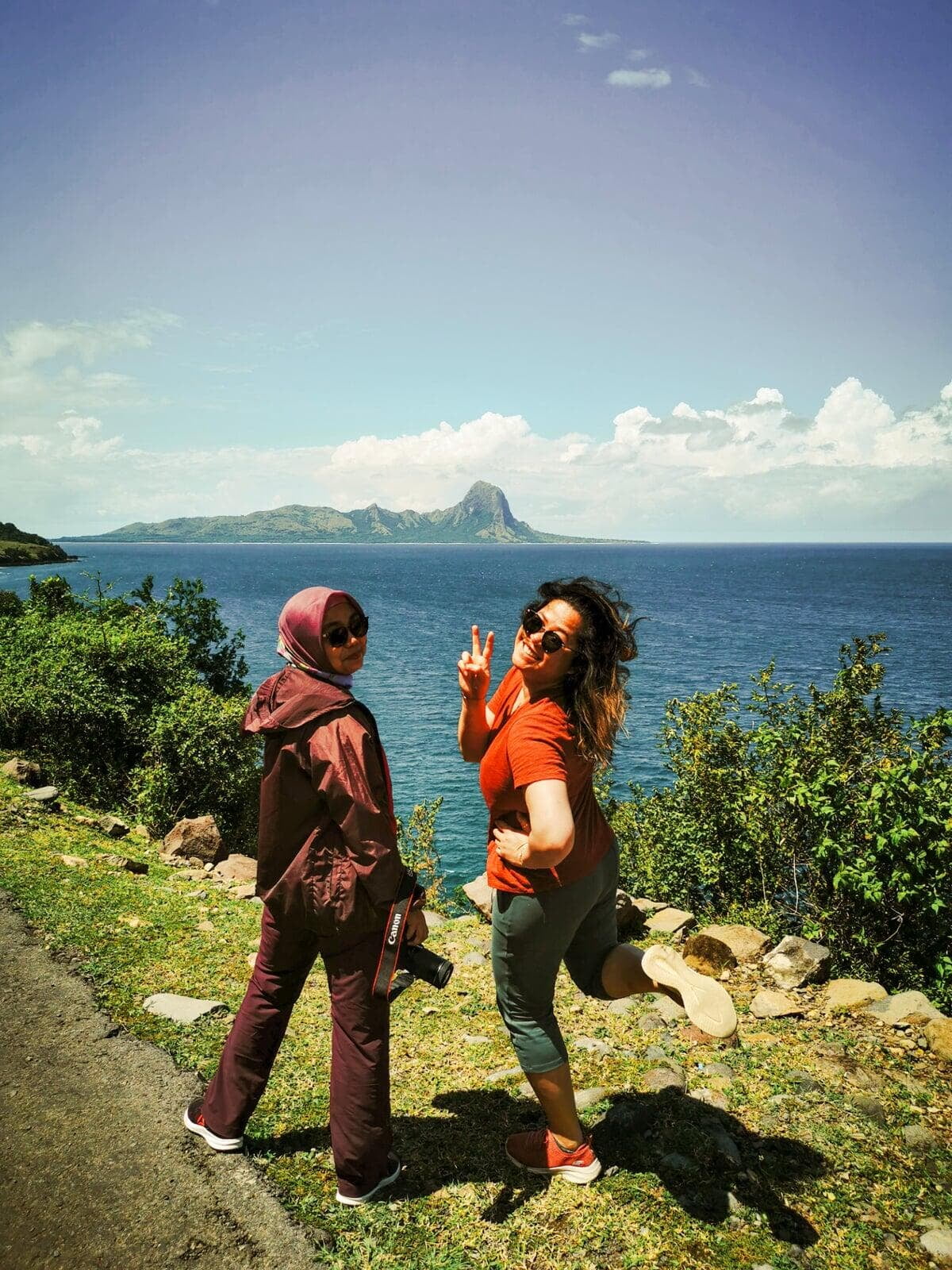
We started the day at around 7 AM, yep, it was early because trekking to Wae Rebo is no walk in the park. In fact, trekking after 2PM is not advised – with a 3-4 hour journey one way, you definitely don't want to be caught without sunlight. It's a safety hazard.
Our trusty ride from Your Flores pulled up to the hotel at the crack of dawn, and there we were, bleary-eyed but determined, ready to tackle this trek-in-lush-forest adventure. We took a semi-private package which normally takes 4 to 6 people per group, however, since it was a low season, we had the trip all for ourselves, VIP style. Fancy schmansy.
And so, operation "Wae Rebo" begun. The beauty of having a private car? We basically set the pace. No waiting around for other tourists, no need to strategically plan bathroom breaks – it was all about us against the winding roads that lead to the mountain. The scenery everywhere around us was so stunning that we couldn’t simply drive past and not stop for a photo. So we did, a number of times.
Our first pit stop was Dentor village. The reason we stopped in Dentor is because it’s the last “big” city before we go further, big enough to have a mini-market because our driver insisted that we need to find ourselves a rain poncho for the trekking. I’m glad we listened to him, we did need that flimsy plastic cover later on.
Next stop was Denge for a pre-hike fuel-up a.k.a lunch. Denge is the last village before the mountain, this is where phone signals ends and digital detox commence unsolicited. The tour package we took includes meals too so we didn’t have to bother to think about where to have lunch.
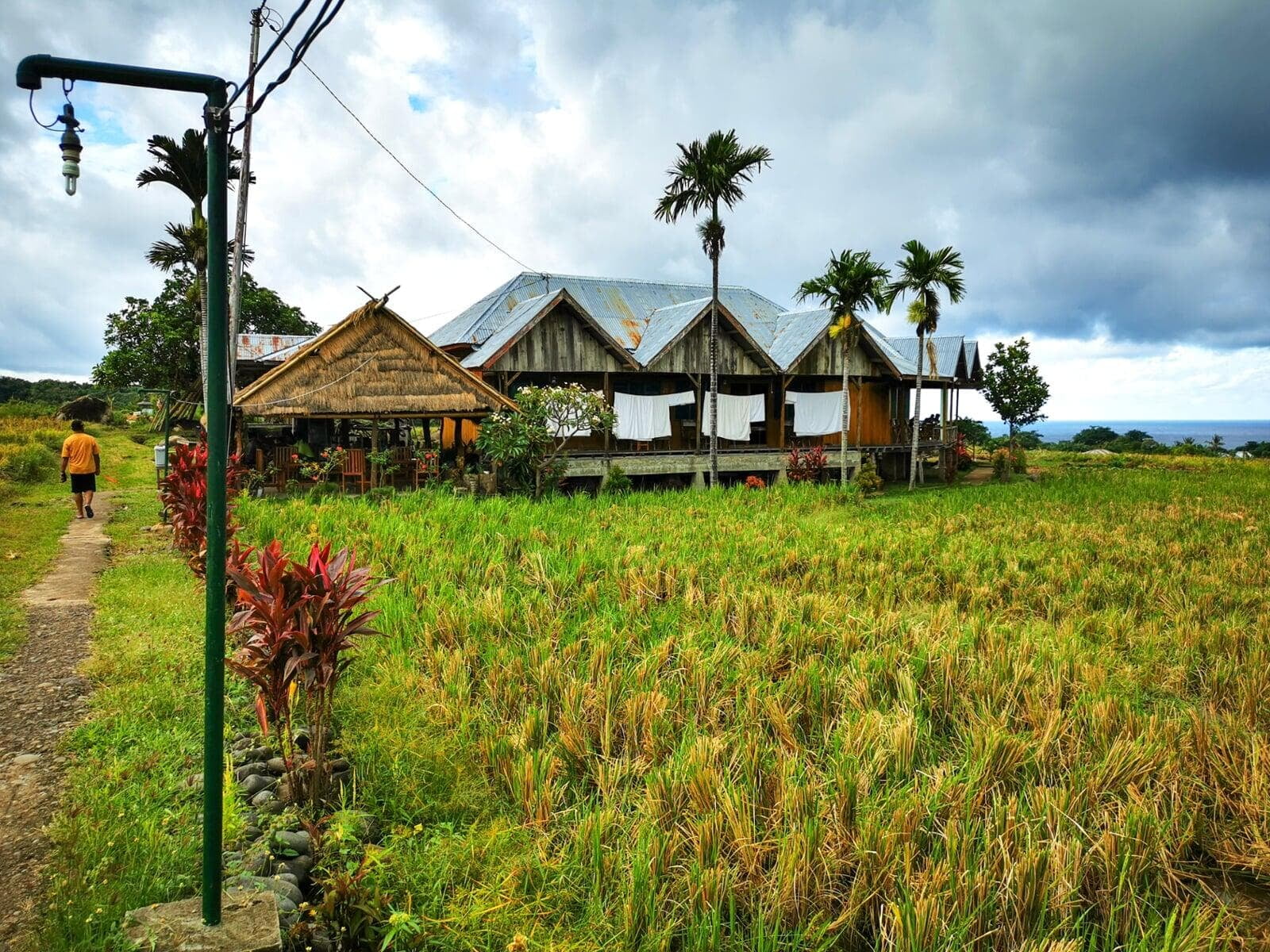
The trekking
Wae Rebo is definitely not your average tourist destination. When they say it’s a remote mountain village, it actually literally is, nestled a cool 1,100 meters above sea level, this tiny gem in the Manggarai district is about as off-the-beaten-path as you can get. After our lunch, the driver took us to the last post before the Todo forest to meet our porter/trek guide and to get on our bike ride. We each got our own bike and off course we didn’t ride it by ourselves, even with Dian's impressive scooter skills, there was no way we could handle the treacherous road into the dense forest alone. The off-road ride lasted about 30-50 minutes, and my bum definitely felt it as we arrived at the entrance of the forest.
As we hopped off the bikes, our guide handed us each a walking stick from the stick rental booth that situated right at the forest entry. Yes, there’s such a thing of stick rental, which literally lend you a piece of wooden stick for a dollar or two and you’re supposed to return it on your back. "Trust me, you'll need these," he said with a smirk that told me he'd seen more than a few overconfident tourists regret skipping on the sticks. Dian took hers without question, while I hesitated but eventually grabbed mine, not wanting to be the odd one out or, worse, the clumsy one tumbling down straight to the ravine.
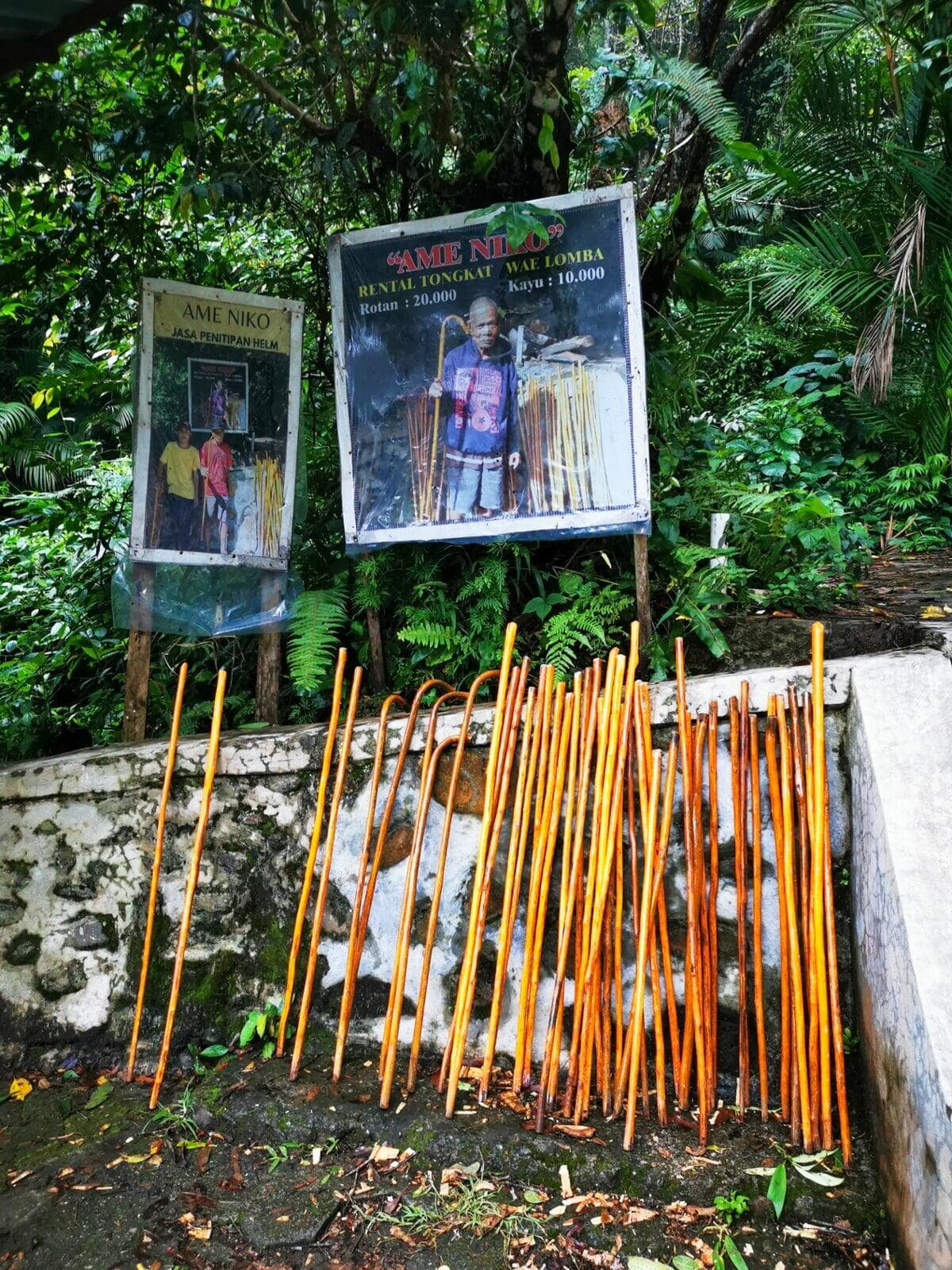
There are three pitstops along the way to reach the traditional village. First stop was at the entrance. The beginning of the trekking path wasn’t that bad or so it seemed. An hour into the trek, we started to question our life choice since the path was really muddy and the vegetation starts to become dense, who knows what lurks in the depths of the Todo forest. While the path getting more and more vertical and my legs getting more and more wobbly, I shoot glances at our porter marched ahead with the determination of a little girl sauntering in a field of flowers. It was almost comical in a sarcastic way seeing him walking so lightly with that giant backpack of mine strapped to him like it’s his own personal snail shell, hopping from one stone to another like it was nothing. And on top of that, he had a cigaret lit up on one hand. Yep, he was literally trekking and smoking at the same time. I rolled my eyes, trying to mask the fact that my breathing sounded more like I had run a marathon than merely walked up a steep slope. From times to times, he would shout out encouraging lines or simply asking if we were all okay. We were not.
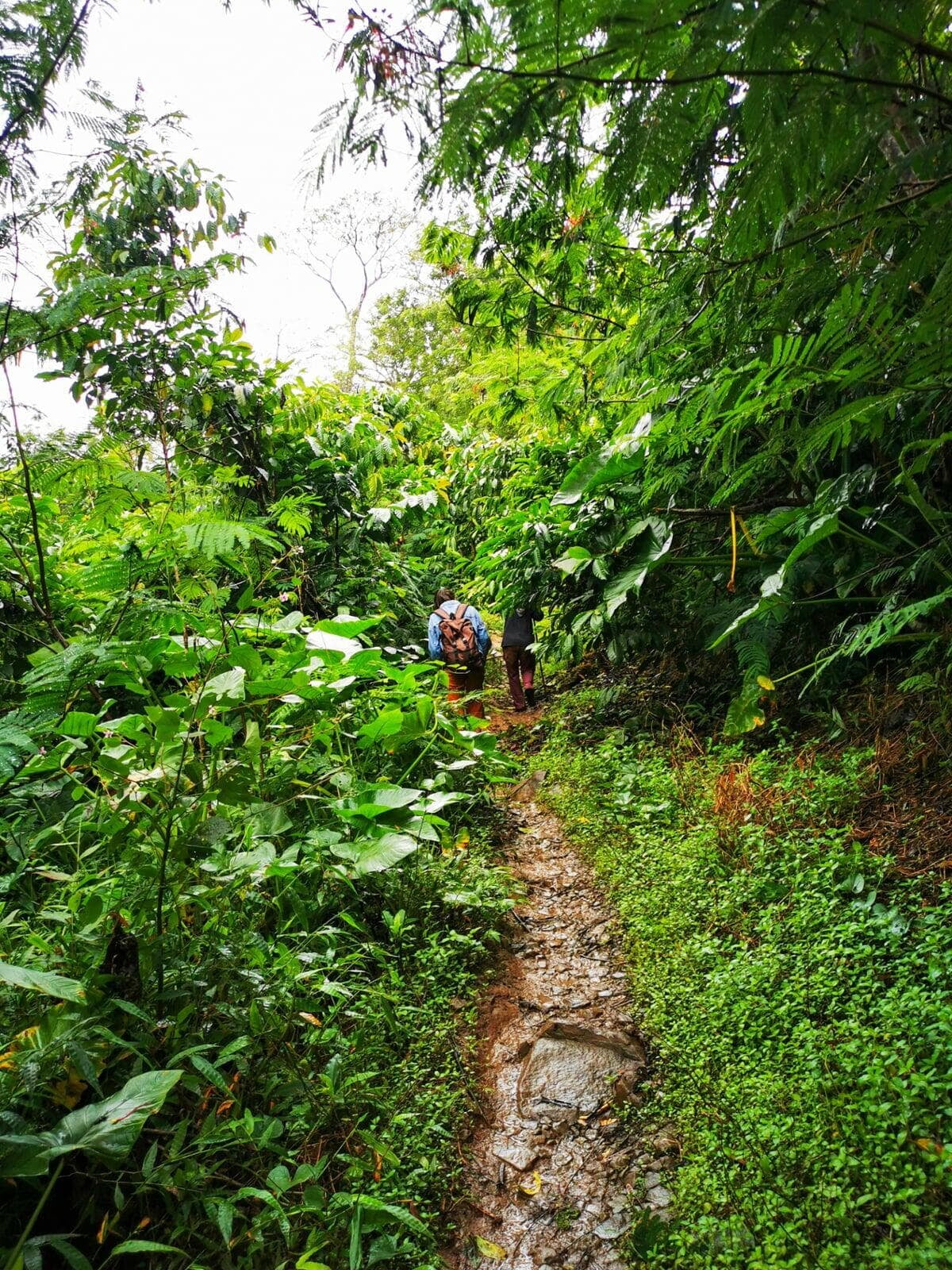
If anyone asked, do you really need a guide to do the trekking? My answer would be, if you are familiar in trekking in the forest, you might not need one. Although trekking to Wae Rebo is literally a hike right in the middle of a thick and lush tropical forest, there’s only one single path to take and it’s pretty clear and kept clean by the local. You basically can’t get lost even if you want to.
Anyhoo, on we went. The path becoming less forgiving and the chatter less frequent as we concentrated on not slipping or stepping on something that wasn't solid ground. The canopy of trees covered us like a dark green blanket, occasionally letting specks of sunlight filter through. It felt like walking through a tunnel made by Mother Nature herself. And yes, I did fear a snake might fall off the trees and flop nicely on me around my neck like a lumpy necklace, but thank God it didn’t happen.
Apparently, it's not falling snakes that we should be aware of here, it's the jumping leeches instead. They lurked in the undergrowth and foliages waiting for unsuspecting open skin to become their all-you-can-eat buffet.
Then came the misty rain, we were grateful for the hideous plastic ponchos the driver made us buy at the corner store. Fashion may have taken a hit, but at this point, who the heck care about how we look. The trail become more slippery and muddy, and when we thought things couldn’t get any worse, Dian’s trustworthy trekking mountain sandal had to give up. Talk about timing.
Luckily, our porter was a crafty one, improvising and surviving against all odds. With a cigarette casually clinging to his lips (because apparently surviving the jungle requires both fire and fashion), he eyed a nearby plant and, with the speed of a pit crew changing a tire, fashioned a makeshift rope from a sturdy root. With finesse, he secured Dian's loose sandal strap. He’s clearly a veteran of trailside fixes.
Dian and I were caught in a trekking paradox. Sure, having a functioning sandal was a trekking godsend, but it also meant we couldn't dramatically declare defeat and turn back. Part of us cheered for the fix, the other half mourned the potential escape route a broken sandal could have provided. We shot each other a look that said, "Thanks, buddy, now we're stuck with this gorgeous view,".
As we trod along, the forest began to unveil its magic as we reached the second pitstop. The misty rain stopped and then, bam! The view unfolded before us like a scene straight out of National Geographic. Lush green mountains rolled into the distance, their peaks shrouded in an ethereal mist of wispy clouds.
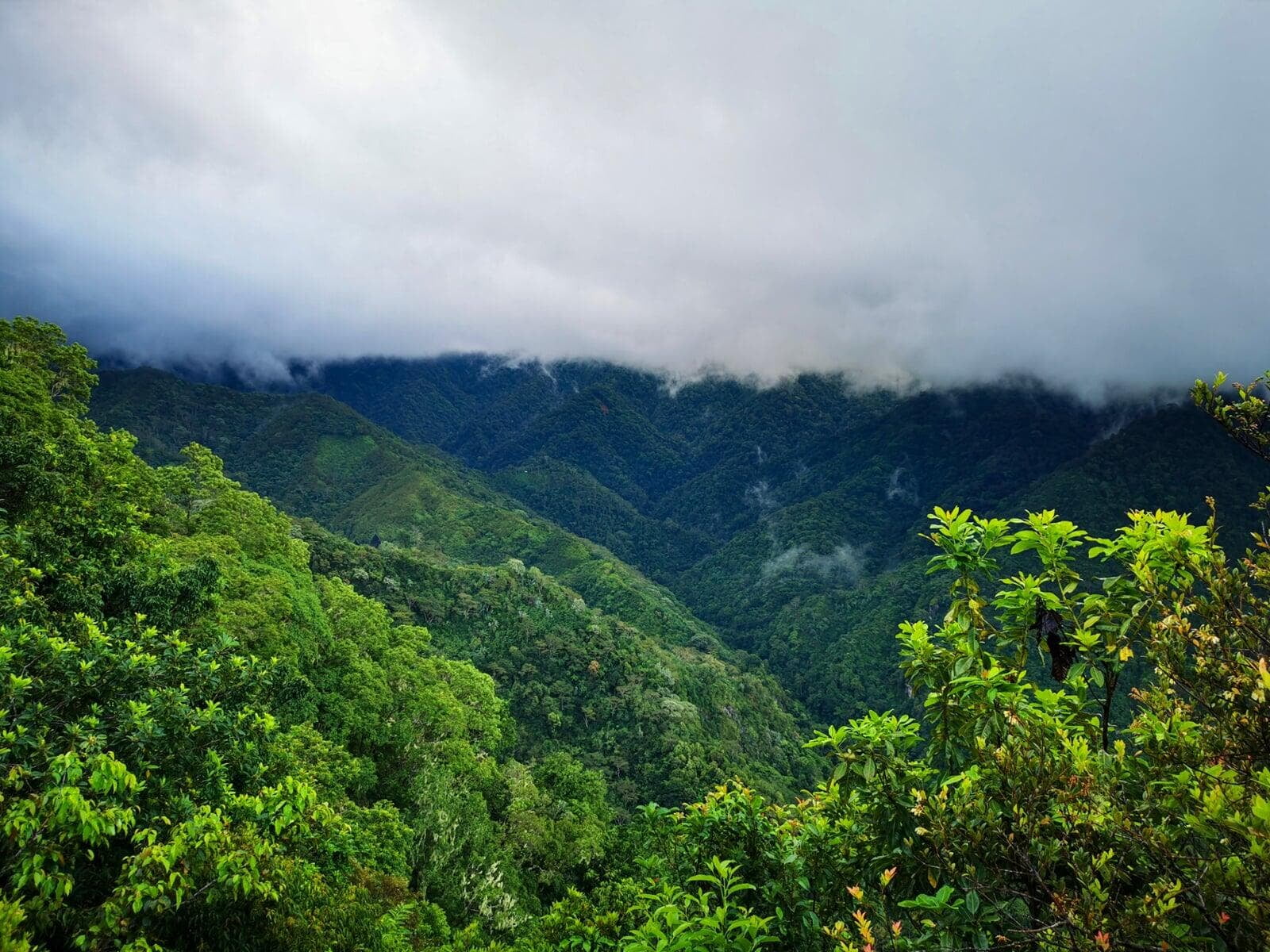
The view definitely was exactly the mental power-up we needed. Suddenly, those aching calves and questionable sandal situation (thanks again, Plant-root McGyver) seemed like a distant memory. With renewed spirit (and the promise of a steaming cup of coffee at the village), we pushed on, determined to conquer this final leg and reach the legendary village above the clouds.
Around another hour or so, we reached the last pitstop, the Hut. Our Plant-root McGyver explained that arriving guests should announce themselves with a good ol' fashioned bamboo beatdown. Think of it as a traditional doorbell, minus the delightful "ding-dong." The instructions? Beat the bamboo – like, literally whack it with a stick. I let Dian to have the honour to announce signal our arrival. So there she was, channeling her inner jungle beatboxing skill in our customary yellow rain poncho.
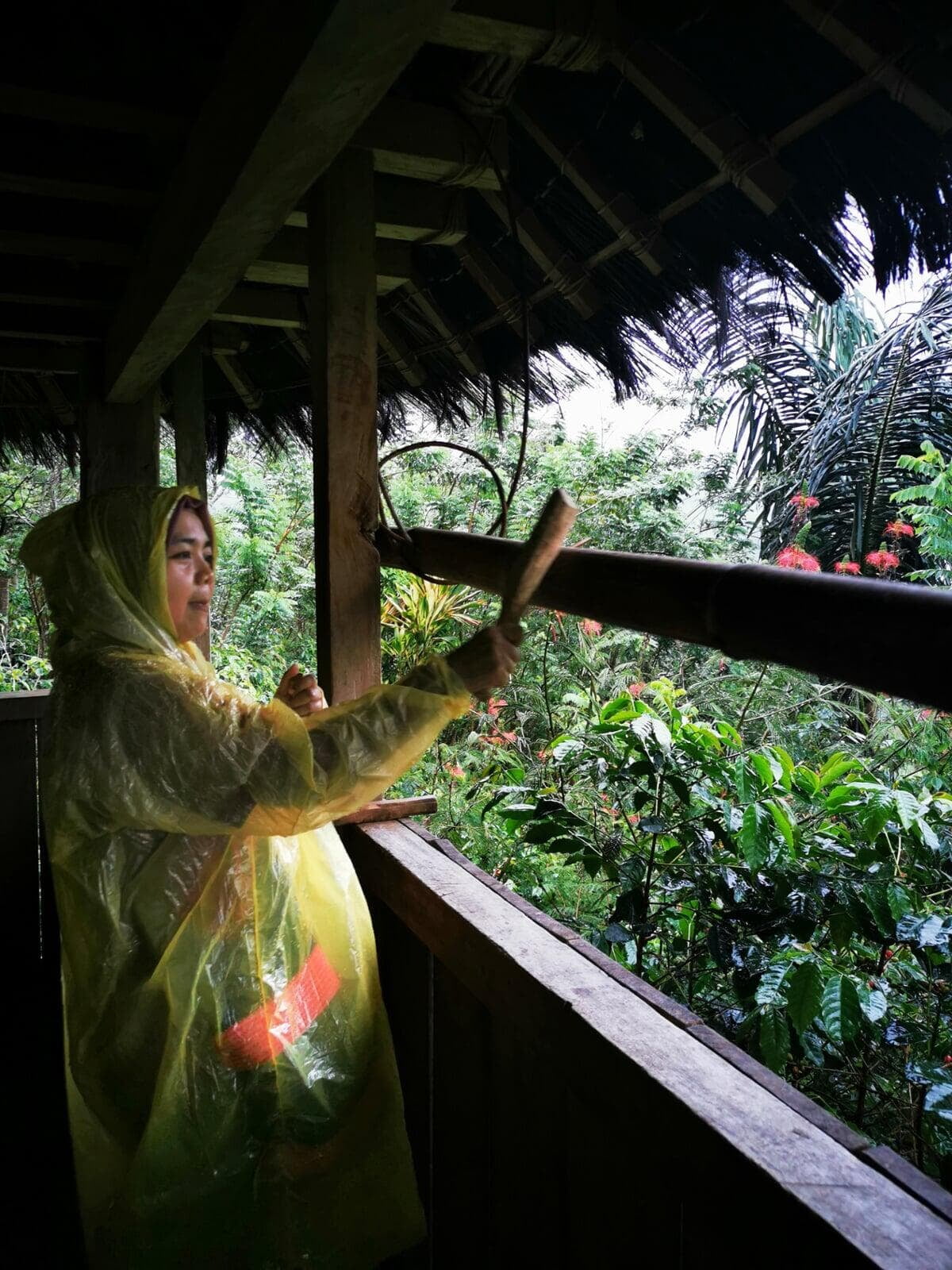
The legendary village above the clouds, Wae Rebo
Finally, we emerged from the dense forest into a clearing. There they were: the ten iconic huts of Wae Rebo, nestled picturesquely amongst the rolling hills. Drumroll please, We've reached Wae Rebo.
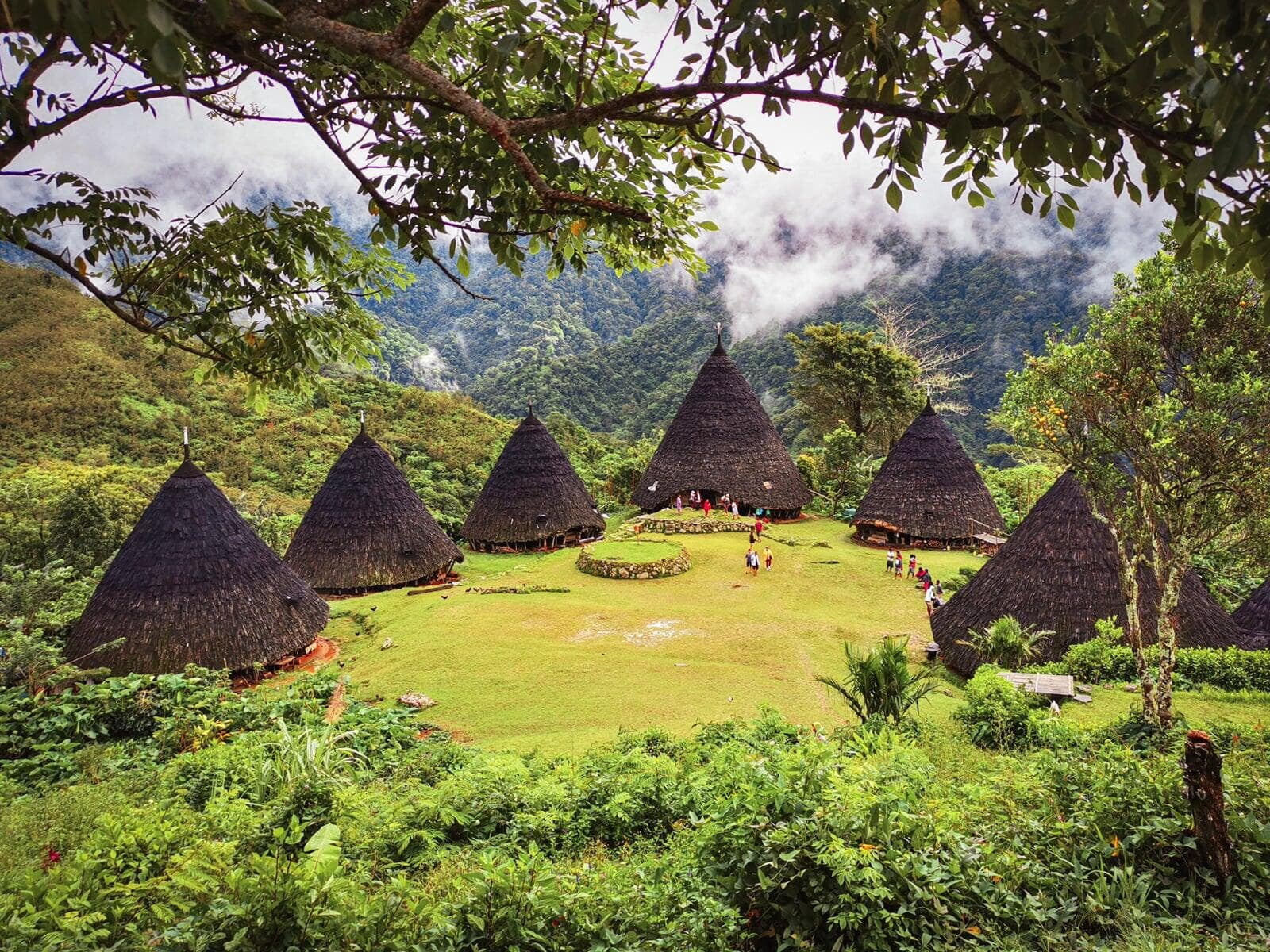
Wae Rebo is a small, very out of the way village in the district of Manggarai on the island of Flores, East Nusatenggara, and it has been declared as one of UNESCO Heritage sites. Situated on around 1,100 meters above sea level and approximately 3 - 4 hour travel by foot from Denge Village. Despite of all our unexpected dramas (the sandal gone rogue, the downpour,.. ) we still made it within the expected duration. Good job, les filles!
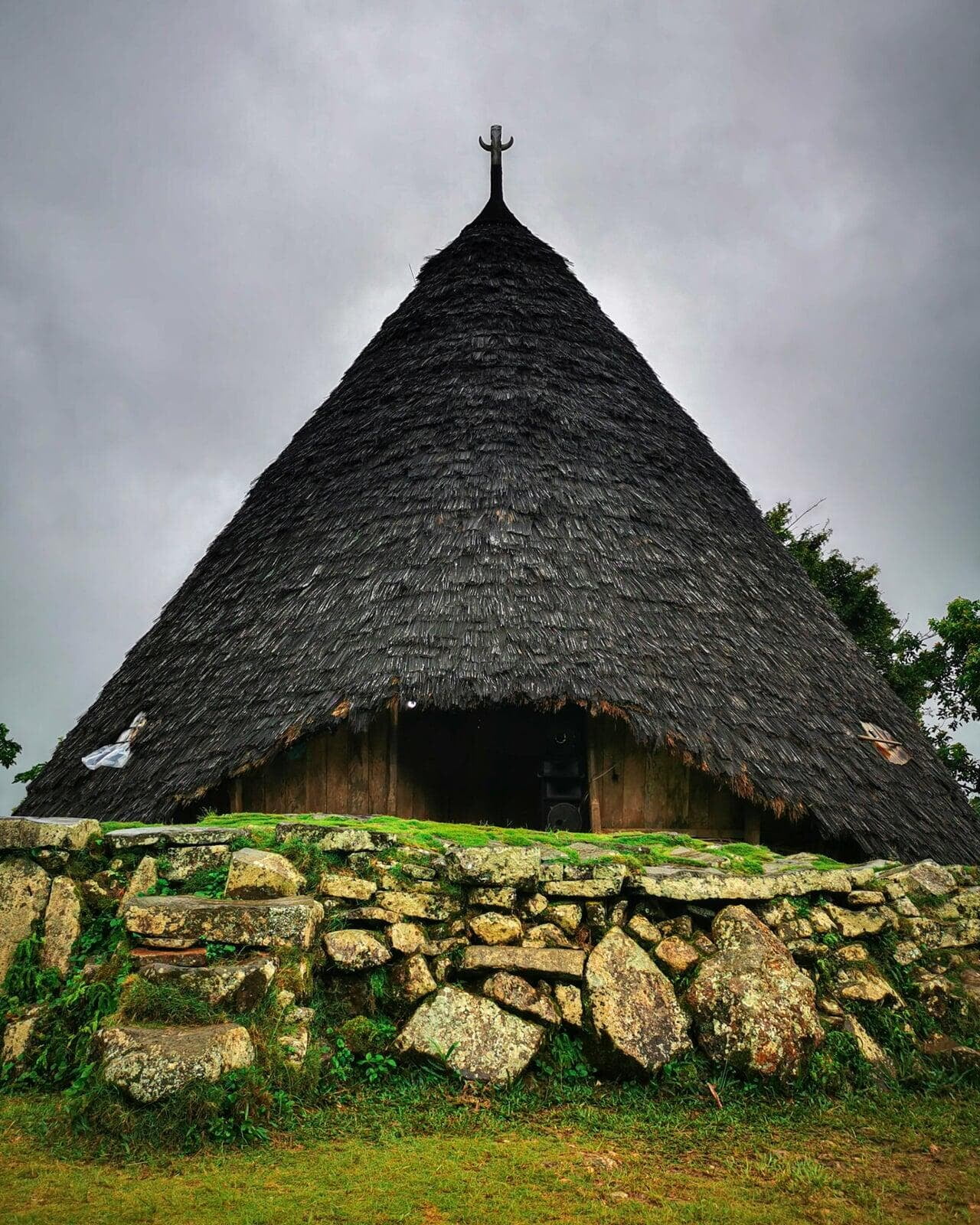
As per tradition, all overnight guests must pay their respects to the chief – a meet-and-greet of sorts before settling into one of the village's unique thatched-roof dwellings. The chief greeted us warmly and explained to us about their culture and tradition. Plant-root McGyver (our man of many talent) stepped in to bridge the language gap.
Through Plant-root McGyver's interpretation, we also learned that our arrival wouldn't go unnoticed by the unseen realm. Apparently, the village is watched over by ancestral spirits, and the chief, acting as a kind of spiritual gatekeeper, needed to report our visit on a, well, spiritual level. Think of it as a cosmic check-in system to ensure only well-meaning souls entered the village. The Wae Rebo people, as any traditional community, take immense pride in their heritage. This meet-and-greet wasn't just a formality; it was a way to acknowledge us as guests, to ensure the village spirits knew we came in peace, and to welcome us into their fold for the night. I know this whole ancestral spirits thing might sound like a mumbo jumbo for cynics out there, but for me and Dian, it was part of the cultural experience.
With introductions complete and ancestral blessings secured (hopefully!), we were shown to our hut for the night. From the 10 huts, only one hut are meant for visitors, the rest are sacred for the indigenous. Yes, Wae Rebo isn't a place for spontaneous drop-ins. Lodging and space inside the visitor hut is limited, and without a pre-arrange stay permit, you might not get space in the the visitor hut, which means you have to trek down the mountain back to civilization, which is not exactly an ideal situation, especially after the sun set. Setting up your own camping tent? Yeah, not gonna happen. You’d be literally kicked out, and who knows what ancestral curse would be laid upon you if you loiter outside the designated hut.
Stepping inside the hut was like entering a time capsule. The thatched roof offered a natural, earthy feel, and the interior, lit by a soft, flickering flame, pulsed with a sense of history and tradition. It was a portal to a bygone era, a chance to truly immerse ourselves in the Wae Rebo way of life.
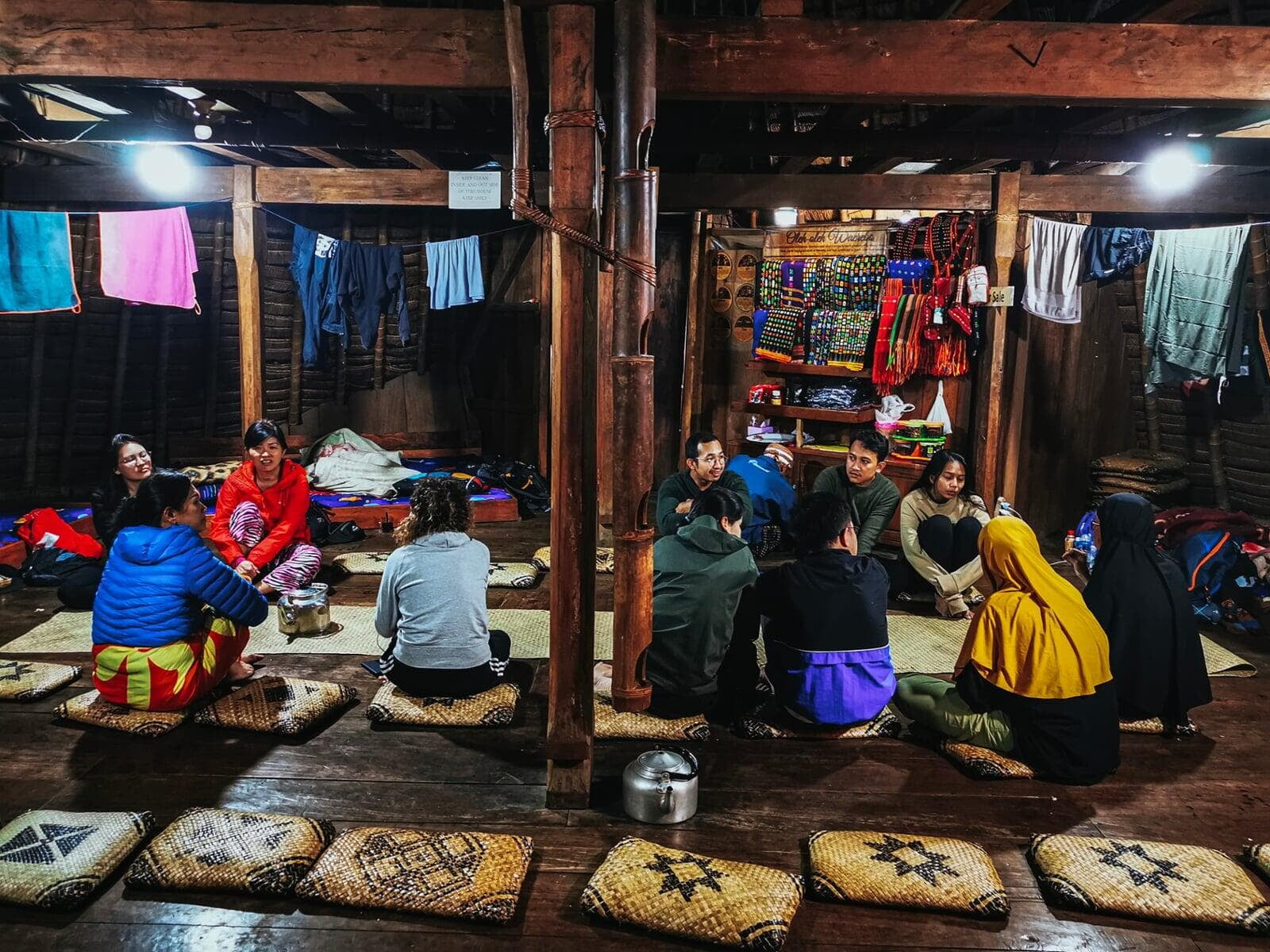
Okay, I’ll be honest, the “traditional village" vibe got a bit of a modern twist thanks to the communal living situation inside this visitor hut. The Hut, while charmingly rustic, could apparently lodge around 25 people at a time, and tonight, we had a full house, with single mattresses and blankets lining the floor – cozy for some, claustrophobic for others (we won't say which). While the ever-present laundry hanging added a touch of "refugee camp chic" to the ambiance, it did little to diminish the warmth of Wae Rebo hospitality.
Dinner were served as soon as the all the expected guests have arrived, around 7PM. Dinnertime in Wae Rebo is a whole other experience. Forget fancy table settings and à la carte menus. Here, it's a communal affair, the meal are laid out on the floor for everyone to dig in.. Our feast consisted of fluffy white rice, a hearty vegetable soup, perfectly cooked eggs, and the ever-present Indonesian staples – kerupuk (those addictive prawn crackers that I love so much) and sambal. Simple yet satisfying.
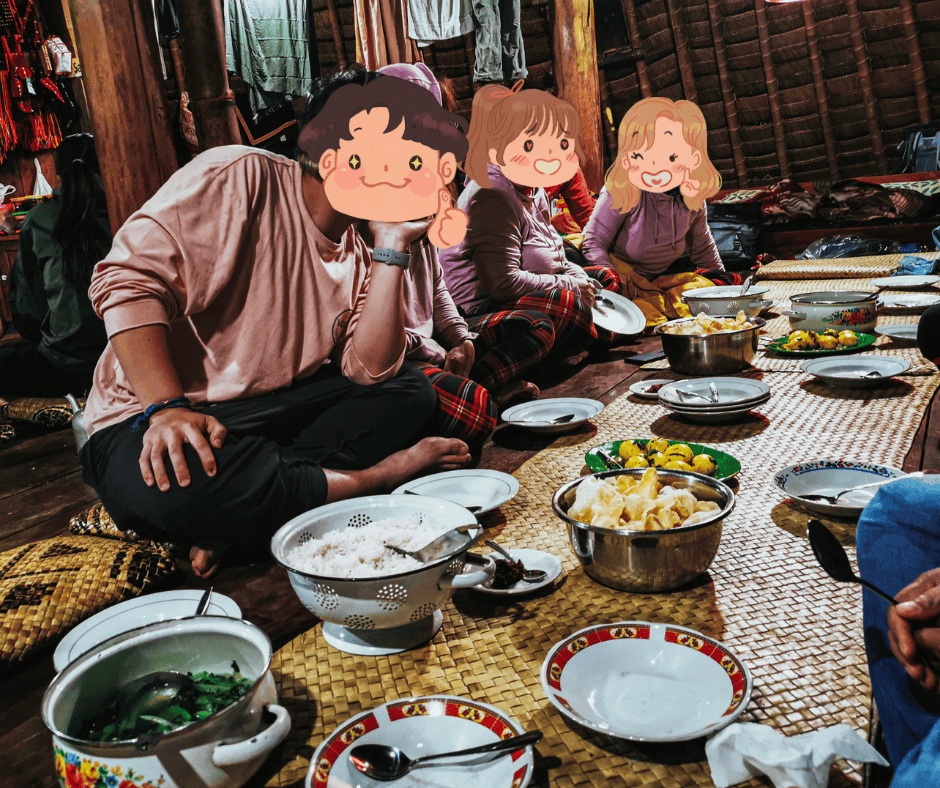
Now, here's where Wae Rebo truly goes off the grid: there's absolutely no cell reception. Well, we barely had any reception down in Denge village, imagine how it was here up in the mountain surrounded by thick forest. No calls, no texts, no Instagram updates – a truly (unsolicited) digital detox dream come true (or maybe a nightmare, depending on your social media addiction). And to add to the unplugged ambiance, the electricity is powered by a generator that runs from 6 pm to 10 pm. Everyone took the much needed shower before the lights off. The ice cold water from the mountain was very refreshing. The clean feeling and full tummy was pure bliss. It was the perfect end to an extraordinary day.
I'll admit, the idea of being plunged into darkness on a mountaintop, far from civilization and surrounded by untouched forest, had me conjuring images from horror movies. But those fears were quickly extinguished by the exhaustion that set in after our epic trek. We drifted off to sleep like babies, lulled by the symphony of the night.
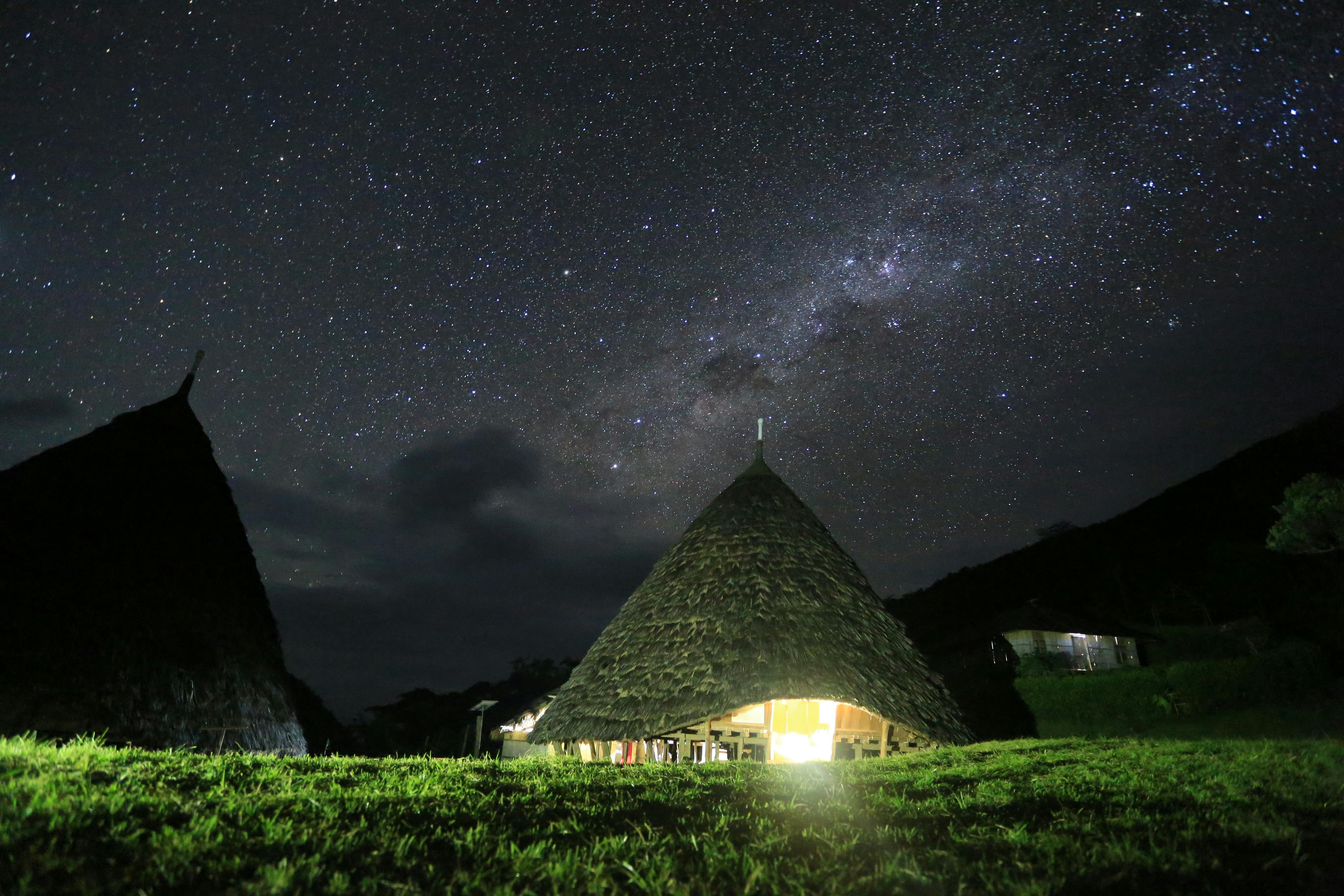
We wanted to wake up early to catch sunset, but who were we kidding? We slept through till breakfast time… LOL…
Breakfast was nasi goreng and the famous Wae Rebo coffee. But the real star of the show to me was the coffee. I don’t know what was in the brew, was it the unique beans grown in the village's fertile soil? The traditional roasting method passed down through generations? Or maybe it was the ambiance – sipping our coffee in the communal hut, surrounded by the warmth of the villagers and the breathtaking mountain scenery? Whatever the secret ingredient, this coffee was pure magic. It was rich and flavorful.
I'm a self-proclaimed coffee addict. And while I wouldn't say Wae Rebo coffee is the absolute pinnacle of coffee perfection (though hey, taste is subjective!), it was undeniably special. More on that coffee here.
After another cup or two, or three, but who’s counting, and another ice cold water shower, we’re ready to trek back down the mountain and continue to our next Flores adventure. The trek down was a breeze compared to the climb. In just over two hours, we found ourselves back at the entrance, greeted by a sight that brought a collective sigh of relief – a line of street vendors! Meaning, we’re back in civilization!
The essentials
- Good trekking shoes, sneakers cut it since the trail is slippery and steeps,
- Rain jacket, the weather is unpredictable up there, expect misty rain,
- Powerbank,
- Mosquito repellent,
- Electric torch,
- Towels and toiletries, they have running water and western toilet there,
- Change of clothes,
- Long sleeves but thin shirt and trousers to protect yourself from jumping leeches,
- Flip flops, it's practical for going in and out of the bathroom from the hut,
- Water
- Cash, As any other tourism spot, we are expected to pay some fee to help them to preserve the site.
Now, while Wae Rebo offers a unique opportunity to immerse ourself in tradition, it's important to manage expectations. I read a lot of articles about how people were disappointed of not having what so called "an authentic experience". Spending the night in one of the hut ISN'T couchsurfing at a villager's home. You'll be assigned to stay at a designated hut for visitor. The village caters to tourists, and the daily routines may have shifted slightly to accommodate visitors.
Despite the tourism focus, the villagers' hospitality is genuine, tho. They take pride in sharing their culture and traditions with visitors. Being respectful guests and following local customs, is the currency. So, while our stay might not involve blending seamlessly into village life, it has undoubtedly be an enriching and unforgettable experience.